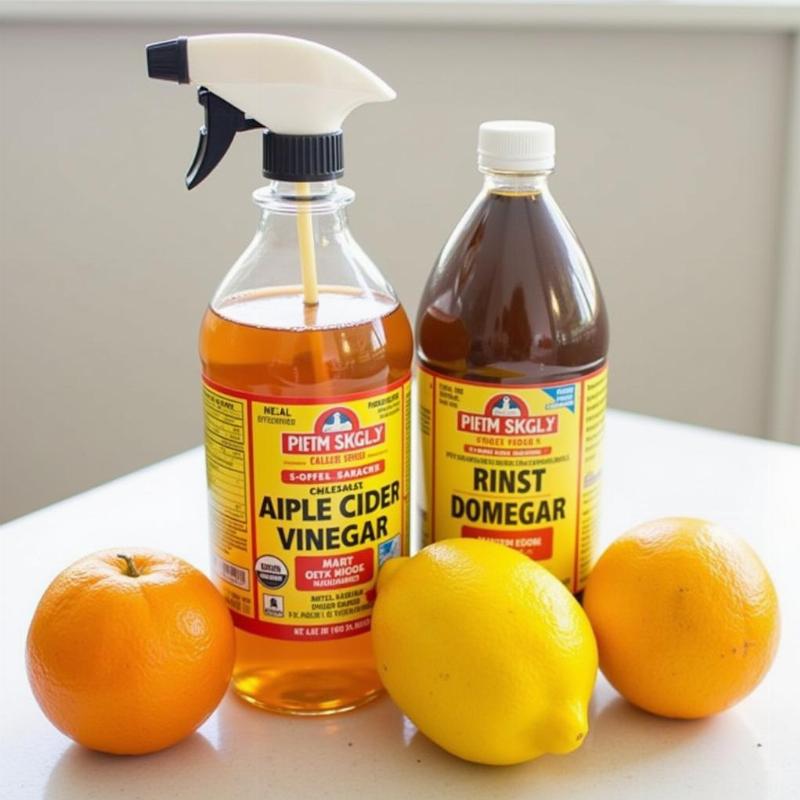Trying to find the perfect DIY no chew spray for dogs can feel like a never-ending quest. Chewing is a natural behavior for dogs, but it can quickly become destructive when targeting your favorite furniture or even hazardous if your furry friend ingests harmful materials. Fortunately, creating an effective and safe homemade deterrent is easier than you think! This article will provide you with simple recipes using common household ingredients and explain why these solutions work, empowering you to protect your belongings and ensure your dog’s well-being.
Understanding Why Dogs Chew
Before diving into DIY recipes, it’s important to understand why your dog is chewing in the first place. Is it teething? Boredom? Anxiety? A combination of factors? Identifying the root cause can help you address the underlying issue while using a no chew spray as a helpful training tool. For puppies, chewing helps relieve the pain of incoming teeth. Adult dogs might chew due to anxiety, boredom, or simply to explore their environment. Providing appropriate chew toys and engaging in regular exercise and mental stimulation can significantly reduce destructive chewing.
 DIY No Chew Spray Ingredients
DIY No Chew Spray Ingredients
Effective DIY No Chew Spray Recipes
Here are two simple, safe, and effective DIY no chew spray recipes you can make at home:
Apple Cider Vinegar Spray
- Ingredients: 1 part apple cider vinegar, 2 parts water
- Instructions: Combine the vinegar and water in a spray bottle. Shake well before each use.
- Why it works: Dogs generally dislike the strong smell and taste of apple cider vinegar.
Citrus Spray
- Ingredients: Peels from lemons, oranges, or grapefruits; water
- Instructions: Boil citrus peels in water for 10-15 minutes. Let the mixture cool, strain, and pour into a spray bottle.
- Why it works: The strong citrus scent is unpleasant for most dogs, acting as a natural deterrent.
Remember to test any spray on a small, inconspicuous area of your furniture first to ensure it doesn’t cause discoloration or damage.
Tips for Using Your DIY No Chew Spray
- Consistency is Key: Apply the spray regularly to the items you want to protect. Reapply after cleaning or if your dog continues to chew.
- Supervise Your Dog: While these sprays are safe, it’s always best to supervise your dog, especially after initial application. Observe their reaction and ensure they don’t ingest large amounts of the spray.
- Positive Reinforcement: When you see your dog choosing an appropriate chew toy, praise and reward them! Positive reinforcement helps them learn what is acceptable to chew on.
- Consult Your Veterinarian: If your dog’s chewing seems excessive or compulsive, consult your veterinarian to rule out any underlying medical conditions.
Addressing the Underlying Cause of Chewing
While a DIY no chew spray is a helpful tool, addressing the root cause of your dog’s chewing is crucial for long-term success. Consider the following:
- Teething Puppies: Provide plenty of safe and appropriate teething toys.
- Boredom: Increase physical exercise and mental stimulation through games, training, and interactive toys.
- Anxiety: Create a calm and predictable environment. Consider using calming aids or consulting a veterinarian or certified dog trainer for behavior modification techniques.
Why Commercial Sprays Aren’t Always the Best Option
While commercial no-chew sprays are available, many contain bitterants and other chemicals that can be harmful to your dog if ingested in large quantities. DIY sprays offer a natural, safer alternative that you can control.
Conclusion
Creating a DIY no chew spray is a simple and effective way to protect your belongings while ensuring your dog’s safety. By understanding the reasons behind your dog’s chewing and combining your homemade spray with positive reinforcement and addressing the underlying cause, you can help your furry friend develop healthy chewing habits. Remember, consistency and patience are key to success.
FAQs
- Is apple cider vinegar safe for dogs? Yes, diluted apple cider vinegar is generally safe for dogs and can even have some health benefits.
- Can I use essential oils in my DIY spray? While some essential oils are safe for dogs, many are toxic. It’s best to avoid using essential oils in DIY sprays unless under the guidance of a holistic veterinarian.
- What if my dog licks the spray? A small amount of the DIY sprays mentioned above is unlikely to cause harm. However, if you notice any unusual behavior, contact your veterinarian.
- How often should I reapply the spray? Reapply the spray regularly, especially after cleaning or if your dog continues to chew on the treated area.
- What if the spray doesn’t work? If the spray is ineffective, reconsider the underlying cause of the chewing. Your dog may be experiencing anxiety or boredom. Consult a veterinarian or certified dog trainer for further guidance.
- Can I use this spray on my dog’s fur? It’s best to avoid spraying directly onto your dog’s fur. Focus on applying the spray to the objects you want to protect from chewing.
- Are there any other natural deterrents I can try? Yes, some dogs dislike the scent of hot sauce or cayenne pepper. You can mix a small amount with water in a spray bottle, but always test on a small area first.
Related Articles
- betagen spray for dogs uses
- dog teeth spray for plaque
- when can i take my dogs cone off
- how to stop a dog from peeing on carpet
Beautdogs.us is your premier online destination for comprehensive dog care information, breed insights, and top-quality product recommendations. We empower both new and experienced dog owners across the US to provide the best possible care for their canine companions. From understanding your dog’s unique needs to finding the perfect DIY no chew spray, Beautdogs.us is your trusted source for all things dog-related. Contact us at [email protected] or +1 501-555-7529.